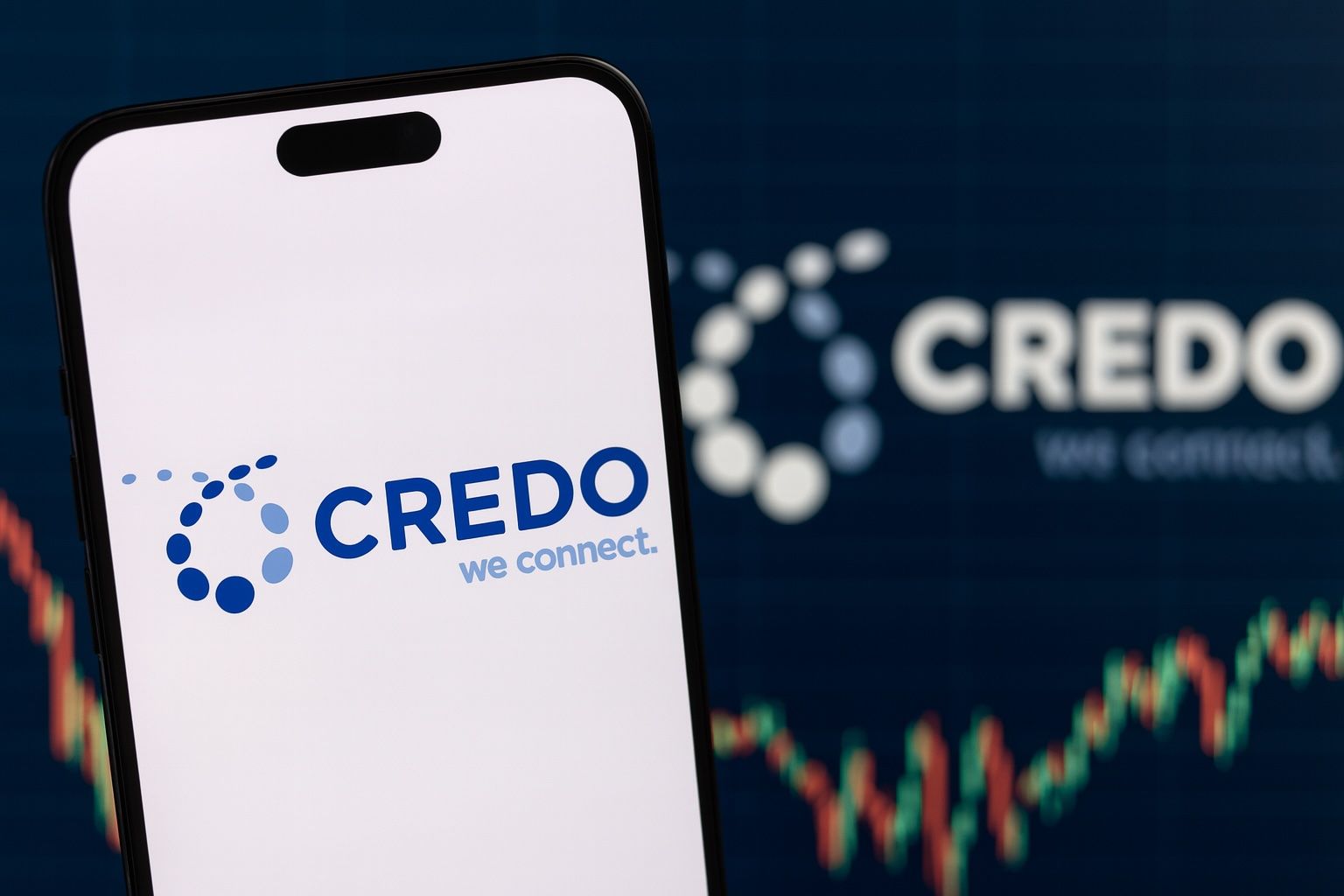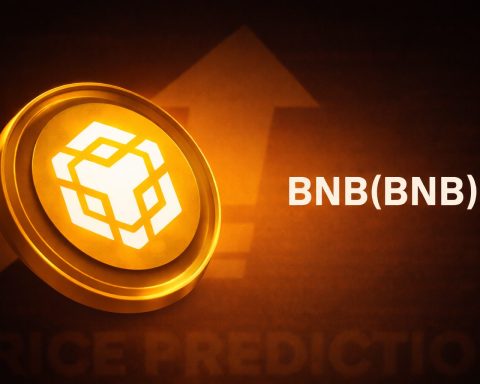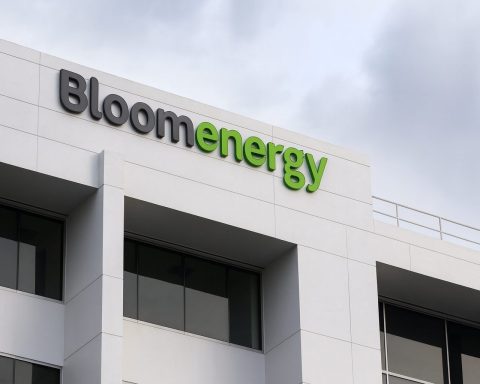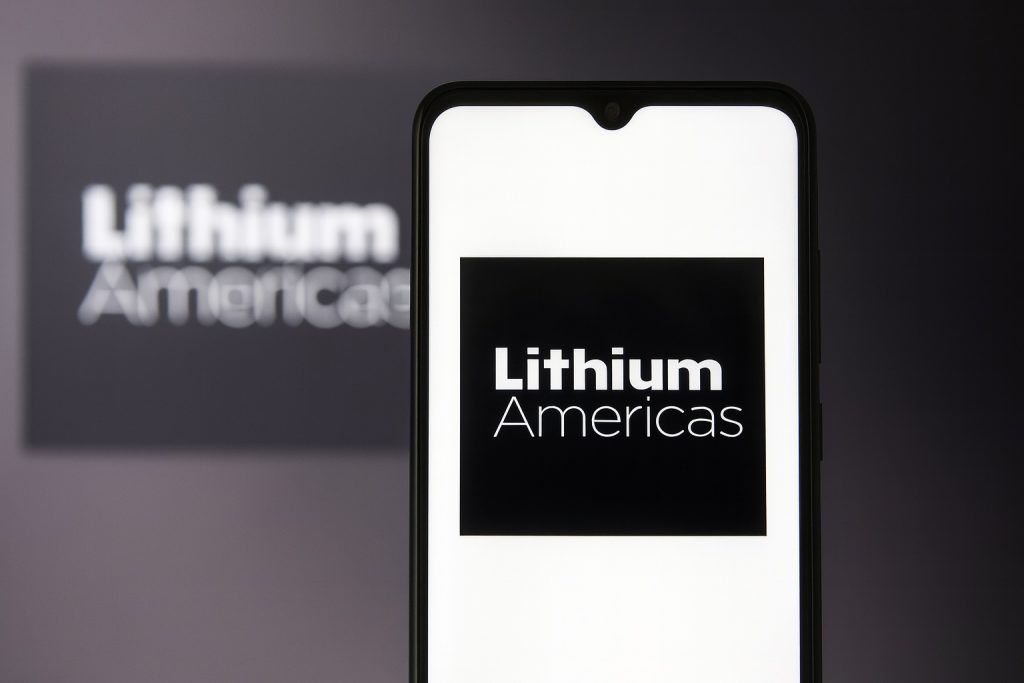- Whipsawing Stock Price: Credo Technology Group (NASDAQ: CRDO) shares spiked nearly 8% on Monday to $149.90, then plunged over 13% to around $130 on Tuesday, October 14 [1] [2]. The past week saw wild swings almost every session, reflecting volatile investor sentiment [3].
- New AI Infrastructure Products: On October 13, Credo unveiled “ZeroFlap” optical transceivers for data centers, extending its ultra-reliable connectivity tech from copper cables to fiber optics [4]. The ZeroFlap line supports blazing-fast 400G, 800G, and 1.6Tbps links, aiming to eliminate costly network “flaps” (failures) in AI supercomputers [5]. Credo is also showcasing its high-speed networking solutions for AI at this week’s OCP Global Summit, an industry conference [6].
- Strategic Partnerships:Credo joined Arm’s “Total Design” ecosystem on Oct. 14 to collaborate on custom silicon for AI data centers [7]. This alliance lets Credo’s high-speed chiplets and SerDes (serializer-deserializer) technology integrate with Arm’s processors, helping customers build specialized AI chips faster [8]. Company execs say partnering with industry leaders will drive “energy-efficient, highly-reliable connectivity” for massive AI workloads [9].
- Fundraising & Acquisitions: In early October, Credo filed to sell up to $750 million in new shares via an at-the-market offering [10]. The move, aimed at fueling growth, initially spooked investors (the stock fell ~7% the day after the Oct. 6 announcement) before rebounding [11]. Credo also acquired Hyperlume, Inc., a startup making microLED optical links for chip-to-chip communication, for ~$40–50 million in cash and stock [12]. This buyout bolsters Credo’s portfolio in ultra-fast optical interconnects for AI hardware.
- Explosive Growth (and Lofty Valuation): Credo’s revenue is skyrocketing – up 273.6% year-on-year last quarter to $223 million [13] – as AI giants race to upgrade data center bandwidth. Fiscal 2025 sales doubled (+126% to $436.8 M) and the company turned profitable for the first time [14]. Analysts expect triple-digit growth to continue (120% revenue gain forecast for FY2026) [15]. However, the stock’s valuation is rich: even after the pullback, Credo’s market cap is ~$26 billion with a trailing P/E over 225 [16], signaling that much of its “AI boom” future is already priced in.
CRDO Stock on a Roller Coaster Ride
Credo’s stock has been on a tear – and a turbulent one. Shares have gained over 1,300% since the company’s January 2022 IPO [17], vastly outperforming the broader market on excitement around its AI data-center niche. But that stellar run now comes with gut-churning swings. Just in the past few trading days, CRDO went from a steep drop to a euphoric jump and back again.
After tumbling ~8% last Friday to $138.83 amid a tech sell-off [18], Credo rebounded 7.97% on Monday (Oct. 13) to close near $150 [19]. The rally was apparently driven by fresh product news (more on that below) and bargain-hunting. Any euphoria was short-lived – by Tuesday Oct. 14, the stock reversed and plunged ~13% intraday, falling from the $150s to about $129.96 at the close [20]. In fact, CRDO briefly touched the $151 level early Tuesday before sellers rushed in [21]. Such whipsaw volatility has defined Credo’s recent week: the stock flipped between big gains and losses almost daily – down 6.9% one day, up 8.5% the next [22].
What’s going on? Analysts say this seesaw reflects a tug-of-war between massive growth optimism and profit-taking fears [23]. Credo is a high-flying momentum stock in the hottest theme (AI infrastructure), so positive news can spark rush-buying – but any hint of overvaluation brings swift pullbacks. Last week, for example, Credo’s announcement of a large share offering initially sent the stock sliding (dilution worries), only for momentum buyers to step in the following day [24]. Then, new AI product launches fueled another pop on Monday, followed by what looks like “sell the news” syndrome on Tuesday as traders locked in gains. In short, expect the wild swings to continue. Even Credo’s fans acknowledge the stock might be overextended in the near term, noting its high valuation and “overbought” technical signals that could “lead to short-term volatility” [25].
New Tech for AI Data Centers: ZeroFlap Cables and More
Credo’s latest rally was underpinned by big product news targeting the AI hardware boom. On October 13, the company rolled out its new ZeroFlap Optical Transceivers, calling it a “reliability revolution” for AI networks. In plain English, these are advanced fiber-optic modules that blast data at 400G to 1.6 Tbps (terabits per second) between servers [26]. They carry Credo’s trademark “ZeroFlap” design – technology that virtually eliminates network link flaps (momentary signal failures) that can plague large GPU clusters.
Why does that matter? In modern AI supercomputers, hundreds or thousands of AI chips (GPUs) are wired together, and even a tiny glitch in those connections can halt training jobs or knock out an entire server rack. Credo notes that each “link flap” in a massive AI cluster can cost $30,000–$50,000 per incident in downtime [27]. Its ZeroFlap architecture – originally proven in Credo’s active copper cables – has delivered up to 1,000× better reliability, virtually eliminating flaps over billions of hours in the field [28]. Now, Credo is extending that ultra-reliability to optical fiber, which is crucial as data centers upgrade to optical links for longer-distance, higher-speed connections. The new ZeroFlap optical transceivers pair custom digital signal processors (DSPs) with Credo’s software platform (called PILOT) to monitor and correct signal quality in real time [29]. The goal: catch and fix any degradation before it impacts AI workloads [30].
The tech community is taking notice. Credo is showcasing these innovations at the 2025 Open Compute Project (OCP) Global Summit this week [31], a gathering of hyperscale data center operators. There, it’s also demoing its 1.6 Terabit “ZeroFlap AEC” cables – next-gen active electrical cables that use built-in chips to maintain flawless signals over copper connections [32]. These offerings underscore how Credo is expanding from its roots (high-speed copper interconnects) into the optical realm, covering every link in the data center chain.
In fact, October’s announcements build on a flurry of product rollouts in recent weeks. In September, Credo unveiled its new “Bluebird” 1.6Tbps optical DSP chip, which aims to cut power consumption below 20 W for next-gen optical modules [33]. Power usage is a key bottleneck in optics, and Bluebird’s efficiency could make it easier to deploy ultra-fast links without overheating [34]. The company also launched a 224 Gbps-per-lane SerDes IP (serializer/deserializer intellectual property) on TSMC’s 3nm process, reflecting its push to offer cutting-edge connectivity blocks for chip designers [35]. All these technical moves speak to Credo’s strategy: establish itself as the go-to provider of high-bandwidth, low-latency connectivity for AI and cloud computing.
Joining Forces: Partnerships to Accelerate Growth
Credo isn’t going it alone. A key development on October 14 was joining Arm’s “Total Design” ecosystem – essentially a partnership program to co-develop next-generation chips for AI data centers [36]. Arm, known for its CPU architectures, launched Total Design to bring together various chip specialists under one roof. By joining, Credo will integrate its high-speed SerDes and mixed-signal DSP technologies with Arm’s processor blueprints [37].
Practically, this means a server manufacturer or cloud provider could more easily incorporate Credo’s ultra-fast connectivity IP (like its 112G+ SerDes chiplets) alongside Arm-based cores when designing custom AI silicon. The multivendor platform enables combining building blocks from different experts – Arm for compute, Credo for data movement, etc. – on advanced chip packaging like multi-chip modules [38] [39]. “As AI workloads grow and compute demands increase, the industry needs easier ways to work together on specialized solutions,” Arm’s infrastructure VP Eddie Ramirez said, praising the collaboration [40]. Credo’s VP Jeff Twombly echoed that sentiment, saying joining Arm’s ecosystem “reinforces our commitment” to work with partners on the core technologies behind energy-efficient, highly reliable connectivity for massive AI workloads [41]. In short, Credo is now plugged into a major chip design network – which could lead to its IP being designed into cutting-edge AI accelerators and networking chips.
The Arm alliance follows another strategic move: in late September, Credo agreed to acquire Hyperlume, a small Silicon Valley firm specializing in microLED-based optical interconnects. Hyperlume’s tech helps chips communicate using tiny optical signals (instead of electrical), which can dramatically speed up chip-to-chip links. Credo completed the deal (for an estimated $40–50 million) just recently [42]. This gives Credo a foothold in emerging optical chiplet technology – likely to be useful as processors and accelerators increasingly use optical I/O to break throughput bottlenecks. It’s noteworthy that Stifel, a Wall Street firm, specifically cheered this acquisition, saying it enhances Credo’s high-speed connectivity lineup for AI and cloud customers [43]. Stifel promptly raised its price target on CRDO to $160 and reiterated a Buy rating after the Hyperlume news, citing Credo’s accelerating revenue momentum in its Active Electrical Cable (AEC) business and now broader reach into optics [44].
Beyond Arm, Credo is also aligning with industry standards groups and mega-customers. It actively participates in OCP (as noted) and has been working with major cloud/data center operators (its customer list isn’t public, but the use cases scream “hyperscalers” like Amazon, Microsoft, Google). We’ve also seen peers in this space – Astera Labs, Marvell, Broadcom – form alliances with the likes of Nvidia or Intel to ensure their connectivity solutions fit seamlessly into AI system architectures. (For example, startup Astera Labs, another AI connectivity darling, partnered with Nvidia to integrate advanced links into GPU systems [45].) Credo’s approach is similar: be everywhere that high-speed data needs to flow, whether inside an AI accelerator box or across an entire data hall.
Money Matters: Big Stock Offering and What It Means
To bankroll its ambitions, Credo is raising a war chest. On October 6, the company announced an equity distribution agreement with Goldman Sachs to sell up to $750 million worth of its stock into the open market [46]. Essentially, this is an at-the-market (ATM) offering that allows Credo to issue new shares gradually. Raising $750 million is no small feat – it represents roughly 3% of Credo’s recent ~$25 billion market value, or about five to six months’ worth of the company’s revenue at its current torrid growth rate.
Investor reaction was mixed. Dilution concerns hit the stock immediately – shares fell almost 7% the next day as traders digested the prospect of increased share supply [47]. However, the slide was short-lived; by the following day, buyers stepped back in and the stock actually surged over 8% [48]. This suggests the market ultimately viewed the capital raise as a necessary fuel for growth. Indeed, Credo’s management has been vocal about big opportunities ahead (and the need to invest in R&D, new products, possibly more acquisitions). Having a hefty cash buffer also de-risks the growth story – Credo ended Q1 with nearly $480 million cash on hand [49], and tapping the markets now (after a 13× stock increase in 3 years) is a savvy way to fund expansion without taking on debt.
What will Credo do with three-quarters of a billion dollars? While specifics weren’t detailed, we can infer a few uses:
- Expand manufacturing and supply capacity: Credo will need to scale up production of its AEC cables and optical modules to meet demand from AI data centers. More cash helps secure components, expand partnerships with contract manufacturers, etc.
- R&D and product development: The company has a roadmap of next-gen connectivity silicon (e.g. moving to 224G SerDes, 1.6T optics, new PCIe/CXL retimers). Extra funds ensure it can hire top engineers and possibly design its own chips or IP on cutting-edge nodes.
- Mergers & Acquisitions: The Hyperlume deal shows Credo is on the lookout for niche tech to bolt on. With a bigger treasure chest, it could acquire other small firms (for example, startups in optical interconnects, AI networking, or telemetry software) to stay ahead technologically.
Of course, issuing new shares can weigh on the stock if not managed carefully – essentially existing shareholders’ stake gets diluted. But Credo’s ATM structure means it can sell shares opportunistically over time rather than all at once. As long as investor appetite remains high (and given Credo’s momentum, it likely will), the company can raise capital incrementally without crashing the price. In fact, one could argue the recent pullback of CRDO stock makes it more attractive for the company to buy into its own long-term vision – new investors get in at 20%+ off the highs, while Credo secures the funding to try to justify an even bigger valuation down the road.
What Wall Street Is Saying
Despite the stock’s roller-coaster moves, market experts remain broadly bullish on Credo’s prospects – albeit with a note of caution on valuation. Here’s a rundown of recent commentary:
- Stifel: Reiterated a “Buy” rating and $160 price target after Credo’s latest product launches [50]. Stifel’s analysts were impressed by the ZeroFlap optical debut and the Hyperlume acquisition, highlighting that Credo’s execution in the AI connectivity market is hitting on all cylinders. They noted Credo’s “impressive performance” – 176% revenue growth over the past year with hefty ~66% gross margins [51] – and expect the new optical offerings to reinforce its leadership. (Notably, Stifel had already boosted its target from around $130 to $160 when Hyperlume was announced [52], and kept that target after ZeroFlap, suggesting upside of ~30% from recent prices.)
- William Blair: Initiated coverage on CRDO in October with an “Outperform” (equivalent to Buy). William Blair highlighted Credo’s expanding product portfolio and its positioning as a picks-and-shovels supplier to the AI gold rush [53]. One insight from their note: Credo’s core Ethernet AEC cable business might account for ~88% of sales in fiscal 2026, but the company is rapidly diversifying into optical solutions (like its new Dove and Lark optical DSP chips) to capture a bigger share of future data center upgrades [54]. In other words, even as AEC cables continue to sell briskly for short-distance connections, Credo is preparing for a more optical-centric world – a strategy the analysts see as prudent and forward-looking.
- Needham & Co. and Barclays: After Credo’s blowout summer quarter, these firms sharply raised their price targets. In early September, Needham hiked its target from $85 to $150 and maintained a Buy rating, while Barclays upped its target from $85 to $165 with an Overweight rating [55]. Both were reacting to the company’s huge Q1 FY2026 revenue beat (Credo delivered $223 M vs ~$190 M expected) and strong AI-driven demand signals. Their revised targets implied they foresaw substantial upside at the time – indeed, CRDO proceeded to surge into the $150–$170 range shortly after [56]. Barclays’ $165 target remains one of the higher on Wall Street and suggests confidence that Credo can keep outgrowing peers.
- Consensus: Overall, analysts are overwhelmingly positive on Credo, though some acknowledge the stock’s rapid appreciation. According to MarketBeat data from early October, 15 analysts cover CRDO with no sell ratings – in fact 13 Buys and 2 Strong Buys [57]. The average 12-month price target was about $128.50 [58], which (at the time) was actually below the trading price in the $140s. That gap hints at valuation anxiety – essentially, the stock had raced ahead of some analysts’ models. We may see those targets get revised upward as firms digest the latest news (for example, the Arm partnership and new product revenue streams could nudge forecasts higher). Indeed, TipRanks lists a recent analyst call at $170 as a bullish case [59]. But even bulls concede that execution needs to stay nearly flawless to support today’s $25+ billion valuation.
On the flip side, there are voices urging caution. Some market commentators point out that semiconductor stocks can be cyclical, and that Credo’s fortunes are heavily tied to AI spending which, while red-hot now, could cool if tech budgets tighten or if competition emerges. “High-octane stocks often command eye-popping multiples, but investors must ask if the growth is sustainable,” one analysis noted [60] [61]. The good news is that demand signals remain strong – for instance, McKinsey projects global data center capacity will more than triple by 2030, with nearly $7 trillion invested in infrastructure [62]. That tide could lift all boats, Credo included. Still, skeptics mention that export controls or new competitors (say, an industry giant developing similar tech in-house) are longer-term risks to monitor.
Forecast: Can Credo Keep Up the Momentum?
The big question for investors: after such a meteoric rise, what comes next for CRDO stock? In the short term, expect a mixed outlook. Technical analysts note that the stock remains in a strong uptrend but is also highly volatile. One momentum model recently flagged CRDO as a top-tier momentum pick (94/100 score) [63], meaning its intermediate-term performance has been exceptionally strong. In fact, quantitative forecasts based on the current trend suggest the stock could climb another ~50% over the next three months (the caveat: with very wide error bars) [64]. In plainer terms, the upside potential is huge if the rally resumes, but so is the risk of sharp corrections along the way. Near-term trading signals are sending mixed messages – for example, Monday’s jump came on lower trading volume, a divergence some see as an early warning of momentum fading [65]. Additionally, Credo’s relative strength indicators had moved into “overbought” territory prior to this week’s pullback [66]. Translation: after a 1,300% run in under three years, the stock may need to catch its breath. Don’t be surprised by more choppiness or even a further dip if some investors rotate out profits.
Looking further out, the long-term outlook for Credo remains broadly positive – tied directly to the AI and cloud computing boom. The world’s appetite for data and AI processing power is only growing, and that drives a parallel need for faster, more reliable networks inside data centers. Credo’s niche – providing the “plumbing” that links chips and servers at extreme speeds – makes it a crucial “pick-and-shovel” player in the AI gold rush [67]. Industry trends favor its business: enormous AI training clusters (like those powering ChatGPT or autonomous driving research) require tens of thousands of high-bandwidth connections, exactly the problem Credo’s solutions address [68] [69]. As operators pack more GPUs into racks and stitch those racks together, they face signal integrity and power challenges – areas where Credo’s active cables and optical DSPs shine [70] [71]. Moreover, debates over copper vs. optical wiring in data centers play to Credo’s advantage: the company is invested in both. “Copper will remain prevalent…but we see an expanding TAM (total market) for both copper and optical connectivity,” CEO Bill Brennan said recently [72]. In fact, management expects to double Credo’s optical revenue in fiscal 2026 while still growing its copper AEC sales [73]. Few competitors cover this full spectrum of connectivity like Credo does.
Another factor is that Credo now has greater financial firepower (thanks to the cash raise) to seize opportunities. It can support big customers with assurance of supply, invest in next-gen products ahead of rivals, and withstand any industry downturns better. The flip side of a strong long-term story is the current valuation – investors are already paying a premium that assumes years of rapid growth and market dominance. At ~60× trailing sales and over 200× earnings, Credo is priced more like an early-stage hyper-growth startup than a typical chip firm [74] [75]. Bulls argue those multiples will come down fast as revenue explodes (indeed, if Credo grows 120% this year as forecast, the forward price-to-sales will roughly halve). Bears counter that any hiccup – a slight miss in earnings, a slowdown to “only” double-digit growth – could trigger a sharp correction when expectations are this high.
Bottom line: Credo stands at the intersection of several powerful trends – AI acceleration, cloud data expansion, and the shift to new networking technologies. Its stock has delivered eye-popping gains riding that wave, and the company’s recent moves (product launches, partnerships, fundraising) show it’s gearing up to maintain momentum. For investors, CRDO is an exciting but bumpy ride. In the near term, volatility is the price of admission for this kind of growth story. Longer term, if Credo continues executing and the AI build-out stays on fire, the company could very well grow into its valuation and beyond. As one analysis put it, the data center boom is a multi-year mega-cycle, potentially a “$7 trillion opportunity” by 2030 [76] – and Credo is positioning itself to be a key enabler of that future. How the stock fares will hinge on whether reality can match the high hopes pinned on this behind-the-scenes AI infrastructure star.
Sources: Credo press releases and financial filings [77] [78]; Nasdaq/Motley Fool analysis [79] [80]; MarketBeat and TipRanks stock updates [81] [82]; Investing.com news [83] [84]; StreetInsider/Arm announcement [85]; ts2.tech market commentary [86].
References
1. stockinvest.us, 2. stockanalysis.com, 3. stockanalysis.com, 4. www.investing.com, 5. www.investing.com, 6. credosemi.com, 7. www.streetinsider.com, 8. www.streetinsider.com, 9. www.streetinsider.com, 10. www.tipranks.com, 11. stockanalysis.com, 12. www.investing.com, 13. www.marketbeat.com, 14. www.nasdaq.com, 15. www.investing.com, 16. www.marketbeat.com, 17. www.nasdaq.com, 18. stockinvest.us, 19. stockinvest.us, 20. stockanalysis.com, 21. stockanalysis.com, 22. stockanalysis.com, 23. www.tipranks.com, 24. stockanalysis.com, 25. www.tipranks.com, 26. www.investing.com, 27. www.investing.com, 28. www.investing.com, 29. www.investing.com, 30. www.investing.com, 31. credosemi.com, 32. credosemi.com, 33. www.investing.com, 34. www.investing.com, 35. credosemi.com, 36. www.streetinsider.com, 37. www.streetinsider.com, 38. www.streetinsider.com, 39. www.streetinsider.com, 40. www.streetinsider.com, 41. www.streetinsider.com, 42. www.investing.com, 43. www.investing.com, 44. www.investing.com, 45. ts2.tech, 46. www.tipranks.com, 47. stockanalysis.com, 48. stockanalysis.com, 49. www.nasdaq.com, 50. www.investing.com, 51. www.investing.com, 52. www.investing.com, 53. www.investing.com, 54. www.investing.com, 55. www.marketbeat.com, 56. www.marketbeat.com, 57. www.marketbeat.com, 58. www.marketbeat.com, 59. www.tipranks.com, 60. www.nasdaq.com, 61. www.nasdaq.com, 62. www.nasdaq.com, 63. ts2.tech, 64. stockinvest.us, 65. stockinvest.us, 66. www.tipranks.com, 67. ts2.tech, 68. www.nasdaq.com, 69. www.nasdaq.com, 70. www.nasdaq.com, 71. www.nasdaq.com, 72. www.nasdaq.com, 73. www.nasdaq.com, 74. www.marketbeat.com, 75. ts2.tech, 76. www.nasdaq.com, 77. credosemi.com, 78. www.tipranks.com, 79. www.nasdaq.com, 80. www.nasdaq.com, 81. www.marketbeat.com, 82. www.tipranks.com, 83. www.investing.com, 84. www.investing.com, 85. www.streetinsider.com, 86. ts2.tech







